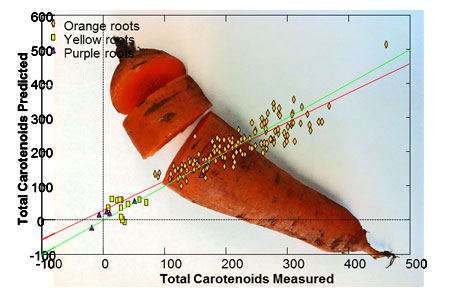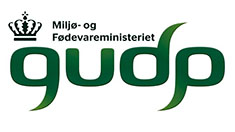Natural colours for food production
PROJECT IS COMPLETED
Period: 2013 - 2017
Natural colours are increasingly replacing artificial colours in foods globally. There is large unexploited economic potential in improving the crops used as raw materials in colour production
Development of crop varieties with high concentration of pigments can facilitate increased exports of natural food colourings and environmentally friendly Danish commodity production.
Natural anthocyanins and carotenes that can be extracted from colourful fruits, berries and vegetables are among the most used colours in food products. They have a market value of EUR 200M and 350M in the global market respectively.
The aim is to increase the pigment formation in selected crops and make them efficient and environmentally friendly 'natural colour factories'.
Quick colour analysis methods allow detection of individual plants and varieties that have significantly increased levels of pigment.
Development of rapid plant pigment analysis supports the development of crops with high pigment concentration by increasing the analytical capacity significantly, thereby improving the selection of the most productive plants.
Spectroscopic techniques combined with multivariate data analysis are known for high capacity, rapid analysis and high sensitivity in a wide variety of chemical substances. Precise analysis with large capacity is crucial for the development of varieties with high and different pigment content.
Simultaneously with the optimisation of pigment, resistance to pests and climate adaptation for growing in Denmark will be incorporated in the new crop varieties.

Funded by:

Natural colours for food production has received a four year funding
Funding: DKK 1,624,600
Total budget: DKK 16,469,900
Project: Natural colours for food production
Original title: Udvikling af planter til produktion af naturlige farver i fødevarer
Period: October 2013 - September 2017
Contact
 Åsmund Rinnan
Åsmund Rinnan
Associate Professor
Food Analytics and Biotechnology
